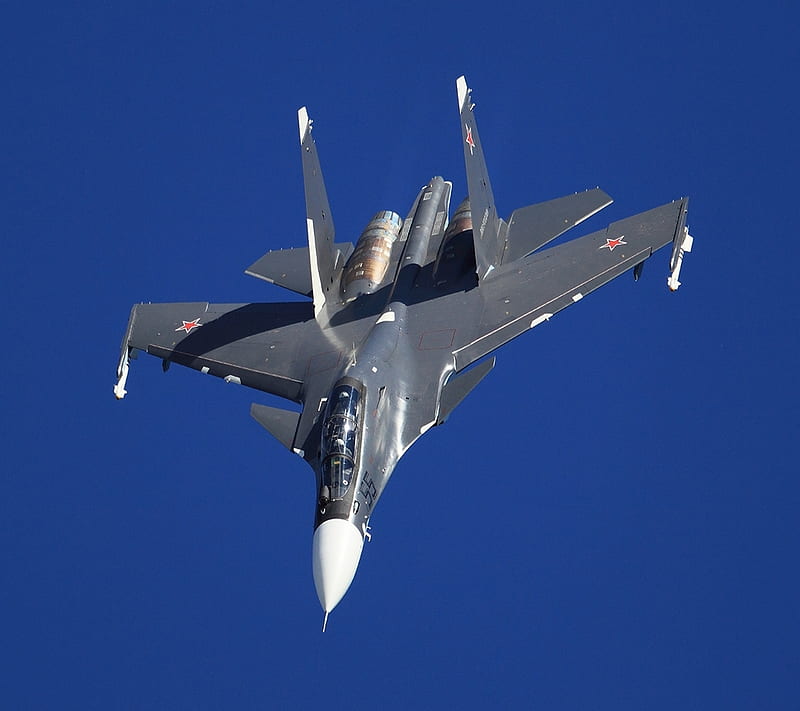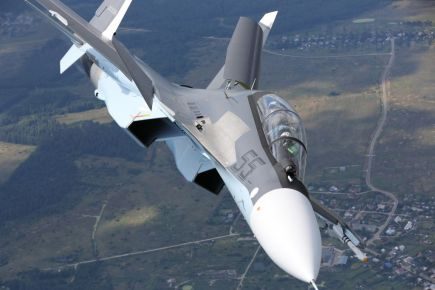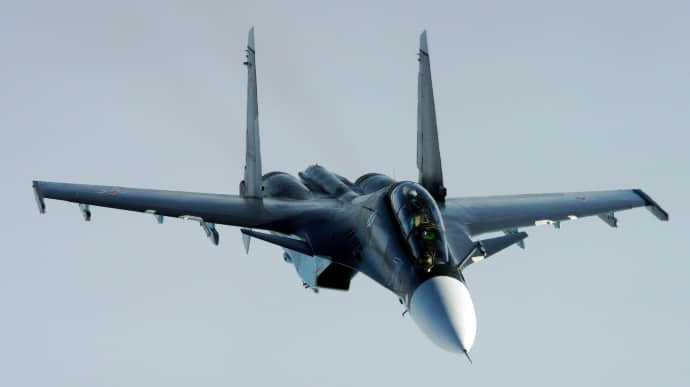The Sukhoi Su-30, a versatile and highly capable multirole fighter, is one of the most prominent aircraft in Russia’s military aviation lineup. Developed by the Sukhoi Design Bureau, the Su-30 is a twin-engine, twin-seat jet designed to perform a variety of missions, including air superiority, ground attack, and reconnaissance. This article explores the design, capabilities, operational history, and strategic importance of the Su-30.

Design and Development
The Su-30 was developed from the successful Su-27 air superiority fighter, incorporating advancements to enhance its multirole capabilities. The aircraft features a tandem-seat configuration, allowing for a pilot and a weapons systems officer (WSO) to operate together, improving mission effectiveness through shared workload and enhanced situational awareness.
The Su-30’s airframe is designed for durability and high performance, with extensive use of composite materials to reduce weight and increase structural strength. The aircraft is powered by two AL-31F afterburning turbofan engines, providing high thrust and excellent performance at various altitudes. Some variants, such as the Su-30MKI and Su-30SM, are equipped with thrust-vectoring nozzles, giving them exceptional maneuverability and the ability to perform advanced aerial maneuvers.

Advanced Avionics and Systems
The Su-30 is equipped with advanced avionics and systems that enhance its combat capabilities. The aircraft features a multi-mode radar system capable of tracking multiple targets simultaneously, both in the air and on the ground. The N011M Bars radar, used in several Su-30 variants, provides long-range detection and tracking, enabling effective engagement of enemy aircraft and ground targets.
The cockpit of the Su-30 is fitted with modern avionics, including multifunction displays (MFDs), a head-up display (HUD), and a digital fly-by-wire control system. These systems provide pilots with comprehensive flight and mission data, enhancing situational awareness and combat effectiveness.
The Su-30 also includes a robust electronic warfare (EW) suite, featuring radar warning receivers (RWR), electronic countermeasures (ECM), and chaff and flare dispensers. These systems help protect the aircraft from enemy radar and missile threats, increasing its survivability in hostile environments.

Armament and Combat Capabilities
The Su-30 is armed with a wide range of weapons, making it a highly versatile combat platform. The aircraft is equipped with a 30mm GSh-30-1 cannon for close-range engagements. It has 12 hardpoints for carrying various air-to-air, air-to-ground, and anti-ship missiles, as well as guided and unguided bombs.
For air-to-air combat, the Su-30 can be armed with R-27, R-73, and R-77 missiles, providing capabilities for short, medium, and long-range engagements. In ground attack roles, the aircraft can deploy Kh-29, Kh-31, and Kh-59 missiles, as well as KAB-500 and KAB-1500 precision-guided bombs. This diverse arsenal allows the Su-30 to effectively engage a wide range of targets, from enemy fighters to ground-based installations and naval vessels.

Operational History and Strategic Importance
The Su-30 has been actively deployed by the Russian Air Force and several other countries’ air forces since its introduction in the 1990s. It has seen combat in various conflicts, demonstrating its capabilities in real-world scenarios. The Su-30’s performance in Syria, where it conducted airstrikes and provided air cover, showcased its effectiveness in modern warfare.
The strategic importance of the Su-30 lies in its multirole capabilities and adaptability to different mission profiles. Its ability to perform air superiority, ground attack, and reconnaissance missions makes it a valuable asset for any air force. The Su-30’s advanced avionics and weapons systems ensure that it remains effective against current and emerging threats.
International Interest and Exports
The Su-30 has attracted significant international interest, with several countries purchasing and operating the aircraft. India, China, Vietnam, and Algeria are among the notable operators of the Su-30, each tailoring the aircraft to meet their specific requirements. The Indian Air Force, for instance, operates the Su-30MKI variant, which incorporates Indian, Israeli, and French avionics and systems.
The export success of the Su-30 highlights its versatility and reliability as a multirole fighter. Its ability to integrate with various weapons and systems makes it an attractive option for countries seeking to enhance their air combat capabilities.

Future Prospects
The future of the Su-30 looks promising, with ongoing upgrades and enhancements planned to maintain its relevance in modern air combat. Continued improvements in avionics, weapons systems, and electronic warfare capabilities will ensure that the Su-30 remains a formidable multirole fighter. Additionally, the development of new variants may expand its operational roles and further enhance its versatility.
Conclusion
The Sukhoi Su-30 stands as a testament to Russian engineering and design prowess in military aviation. Its combination of advanced technology, powerful armament, and exceptional maneuverability make it one of the most capable multirole fighters in the world. As the Su-30 continues to serve in various air forces, its role in shaping the future of aerial combat and maintaining air superiority remains indisputable.





